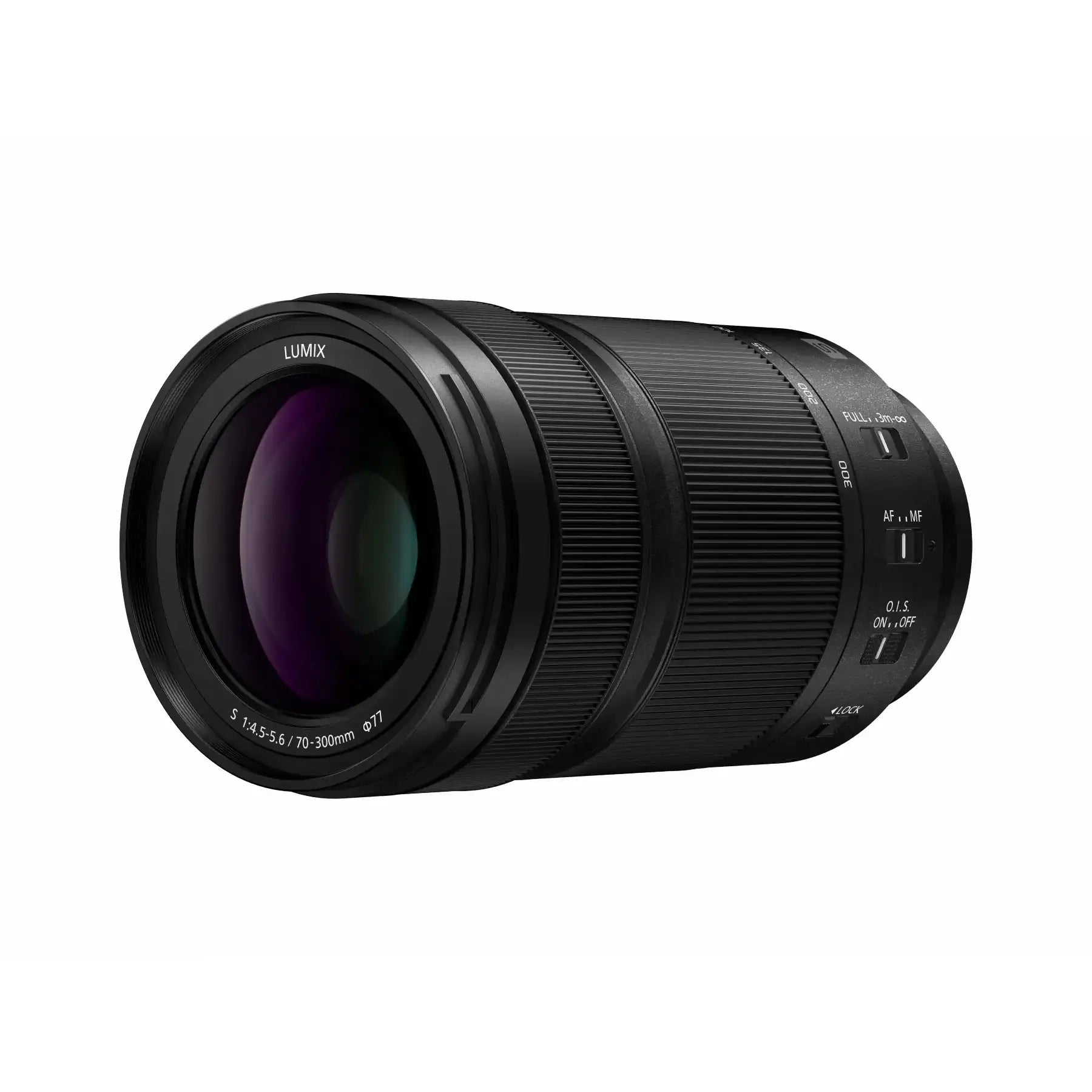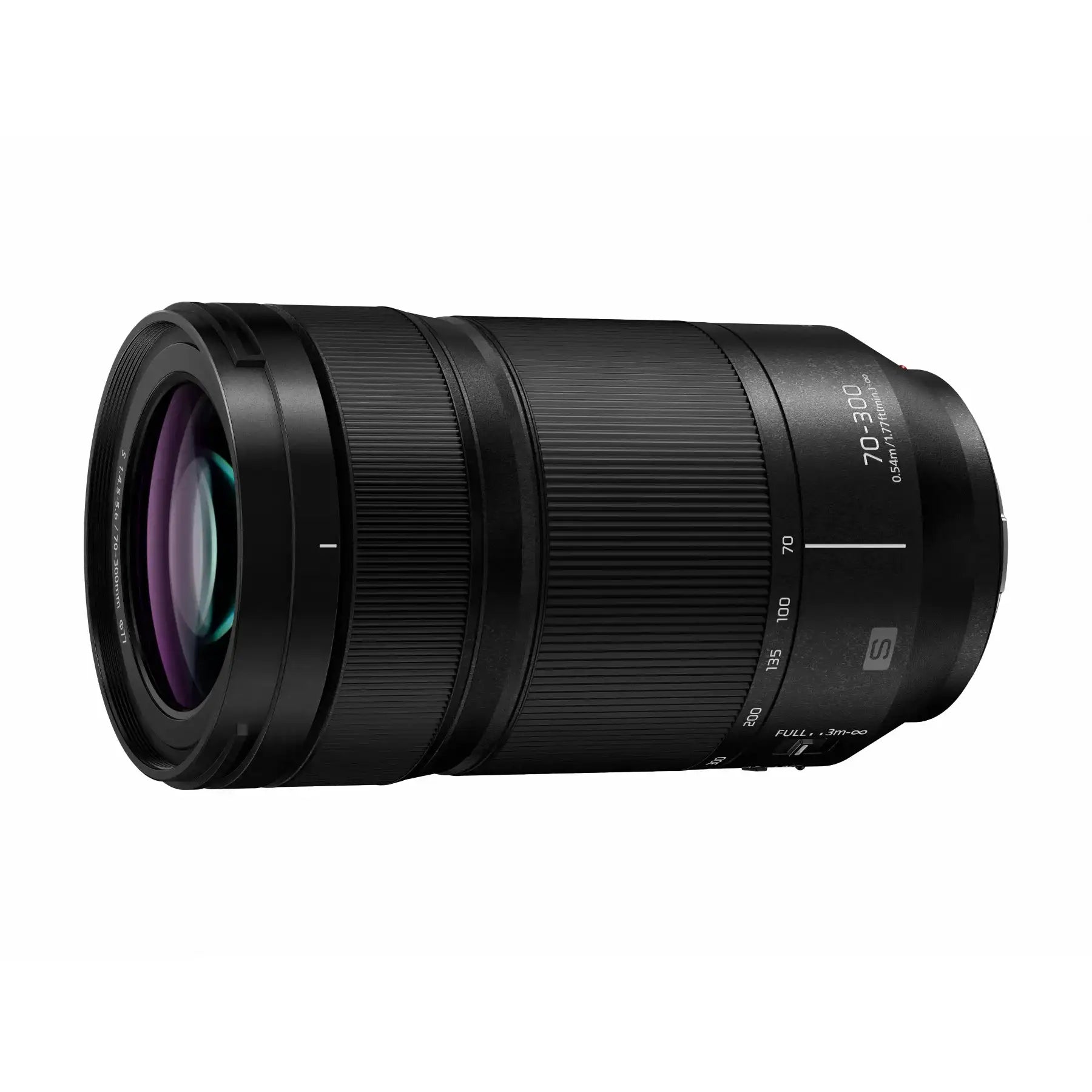LUMIX 5-Year Extended Warranty Offer
 Great news for LUMIX S Series customers!
Great news for LUMIX S Series customers!
From 14th March 2025 to 31st March 2026, purchase any eligible LUMIX S Series camera or lens and receive a free extended warranty – giving you 5 years of total cover (1-year standard + 4 additional years).
How to claim:
Register your qualifying product on the My Panasonic platform between 13th May 2025 and 30th June 2026 to activate your extended warranty.
🔗 Learn more and register here
Make sure to register in time to enjoy peace of mind with Panasonic's 5-Year Warranty on your LUMIX S Series gear.
Product Description
Panasonic Lumix S 70-300mm f4.5-5.6 Macro OIS Lens
The Panasonic Lumix S 70-300mm f4.5-5.6 Macro OIS Lens is a versatile telephoto zoom lens designed for full-frame L-mount cameras, delivering sharp images and stunning video across a wide focal range. Whether you're shooting wildlife, sports, or action, this lens offers exceptional performance with advanced Optical Image Stabilization (OIS), allowing for precise and smooth operation even at extended focal lengths. Its 0.50x macro capability at 300mm makes it perfect for high-resolution macro photography.

Key Features:
- 5.5-stop Dual I.S. 2: Provides exceptional stabilization, combining dual-axis OIS with in-body stabilization for sharper handheld shots, especially at telephoto ranges.
- 17 elements in 11 groups: Includes high-performance optical elements that reduce aberrations and enhance image quality throughout the zoom range.
- Rugged, weather-resistant design: Dust-, splash-, and freeze-resistant, ideal for outdoor and challenging environments.
- Precise zoom and tracking: Features enhanced zoom tracking control, offering up to 8x faster performance for smooth, accurate zooming.
- 0.50x macro capability at 300mm: Capture intricate details in life-like macro images with impressive sharpness.
- High-quality video performance: Minimised focus breathing ensures smooth focus transitions when recording video.

Superior Image Stabilization
With Dual I.S. 2, this lens provides up to 5.5 stops of correction, combining both optical and in-body stabilization. This makes it perfect for telephoto shooting, allowing you to capture crisp, blur-free images, even at slower shutter speeds.

Versatile Zoom Range
The 70-300mm focal length makes this lens highly versatile, ideal for a variety of shooting situations from distant wildlife to sports photography. The 0.50x macro capability at 300mm provides excellent close-up detail, making it a go-to lens for those looking to capture both distant and macro subjects.

Advanced Optical Performance
Constructed with 17 elements in 11 groups, the lens features high-quality optics that reduce chromatic aberrations and maintain sharpness throughout the zoom range. Its advanced wobbling control ensures precise focus and zoom tracking, while the zoom lock switch keeps the lens securely in place during transport.

Built for Harsh Conditions
Designed to withstand the elements, the Lumix S 70-300mm f4.5-5.6 Macro OIS Lens is both dust-, splash-, and freeze-resistant, allowing you to shoot in challenging environments with confidence. Its rugged construction ensures reliable performance in temperatures as low as -10°C.

High-Quality Video Applications
This lens is perfect for videographers as well, offering suppressed focus breathing and smooth ring control, which enables more natural focus transitions when recording video. The lens ensures high-quality video capture with minimal image shifting when zooming.

Capture stunning telephoto and macro shots with the Panasonic Lumix S 70-300mm f4.5-5.6 Macro OIS Lens—a highly versatile, rugged lens designed for photographers and videographers looking for exceptional performance and reliability in any situation.

For full specifications click Here
Try The Kit - Lumix Loan

Try Before You Buy – Free Next Day Delivery
Test selected Lumixgear with a 48-hour free trial or hire for up to 7 days at a low cost. Book anytime via the 24/7 live system.
How It Works:
-
Book Online – Choose your dates and reserve your kit.
-
Pay Deposit – Fully refundable when gear is returned in good condition.
-
Fast Delivery – Shipped securely or collect in-store.
-
Easy Returns – Use the original packaging and pre-paid label.
For more information and to book, visit https://lumix.trythekit.com/
Payment & Security
Your payment information is processed securely. We do not store credit card details nor have access to your credit card information.

























